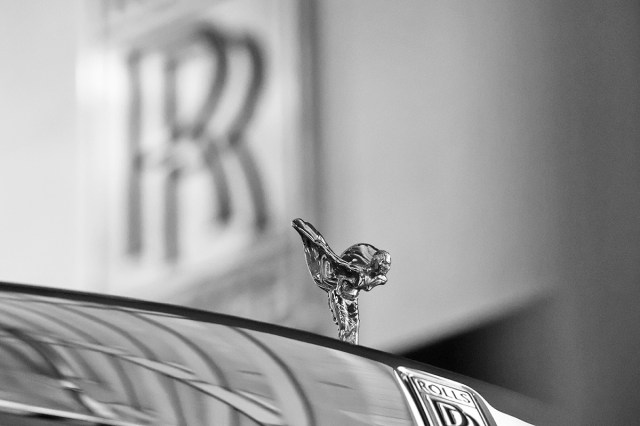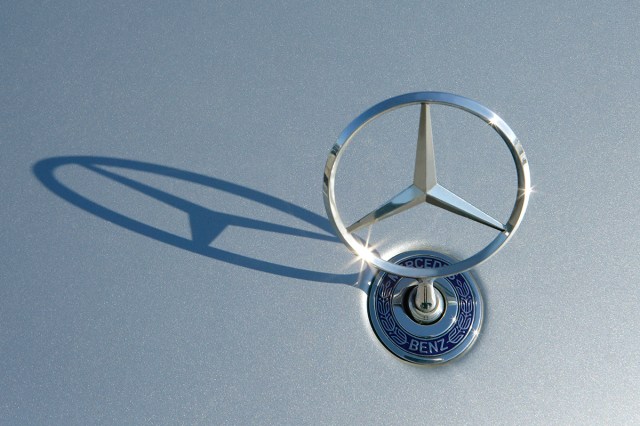
The Golden Age of Hood Ornaments
The first half of the 20th century was the golden age of hood ornaments — or car mascots, as they were sometimes known — which were originally used for both practical and aesthetic purposes.
The trend started in 1911, when Rolls-Royce began attaching its iconic Spirit of Ecstasy figurine to its hoods, purely as a status symbol. Around the same time, a new invention called the Boyce MotoMeter became popular. This device was basically a thermometer that screwed directly into the radiator cap, which back then was located on the hood. This allowed the driver to see the engine temperature while driving to help avoid overheating. Motometers were both practical and quite ornate, and they helped to further popularize the concept of hood ornaments.
Motometers became obsolete as manufacturers began to incorporate coolant temperature gauges into their vehicles, but the idea of affixing objects to hoods purely for decorative purposes remained. By the 1930s, hood ornaments had reached their artistic zenith. Other luxury car manufacturers followed Rolls-Royce’s example and began designing their own distinctive hood ornaments: Mercedes-Benz with its three-pointed star, Jaguar with its leaping cat, and Bentley with its Flying B.
By this stage, hood ornaments had evolved beyond simple decoration to become powerful branding tools that instantly communicated a manufacturer’s individuality, style, and prestige. They also started to gain popularity among American-made vehicles, with Dodge’s charging ram, Lincoln’s four-pointed star, and Buick’s bombsight, to name just a few.

Practical Concerns
Throughout the 1960s and 1970s, hood ornaments began to disappear, in part due to safety concerns. As the understanding of pedestrian safety improved, metal ornaments protruding from car hoods were increasingly viewed as a potential hazard in collisions.
The ornaments weren’t officially banned, but many manufacturers did take note. Some eventually removed their hood ornaments altogether, while others came up with innovative solutions to address the safety issues — Bentley, for example, installed a feature that allowed its Flying B to retract inside the hood in the event of an impact.
Another blow to hood ornaments came from the modern pursuit of aerodynamic efficiency. As cars became faster and manufacturers increasingly sought ways to reduce drag coefficients and increase fuel efficiency, protruding ornaments became something of an engineering liability.
While the effect may have been negligible in some cases, hood ornaments such as the chunky Bugatti elephant and the bulky Mack bulldog could certainly hinder a car’s aerodynamics. Rolls-Royce, despite being one of the few high-end car manufacturers to retain its hood ornaments, has still taken aerodynamics into account. Its Spirit of Ecstasy figurine was originally a hefty 6 inches tall but has slowly shrunk over time, with the statuette most recently downsized to about 3.25 inches tall in 2022.
Another practical concern was simple theft. By the late 1980s, the theft of automobile accessories had risen sharply across the U.S., in part to fuel a growing fad among youths of wearing luxury hood ornaments around their necks. (Mercedes-Benz and Cadillac were particularly popular.) In response, manufacturers such as Mercedes-Benz made removable emblems available, while Rolls-Royce and Bentley began making retractable anti-theft ornaments that disappear down into the hood if tampered with.

The Decline of Hood Ornaments
Taken altogether, these three practical elements — safety, aerodynamics, and theft — have made hood ornaments less appealing to both manufacturers and car owners. Apart from these practical concerns, modern car design trends have embraced a more minimalistic approach. This design philosophy emphasizes simplicity, clean lines, and unadorned surfaces — all of which run counter to the extravagant nature of hood ornaments.
Hood ornaments are rarely seen today, and only a handful of luxury manufacturers, including Rolls-Royce and Bentley, still offer them on current models. While hood ornaments have largely vanished from modern roads, however, their influence can still be seen in car design and brand identity — and they remain powerful symbols of automotive history.










